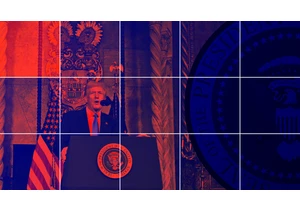TikTok’s “hopecore” trend manufactured internet cheer. That is, until users turned on it.
Videos labeled #hopecore once symbolized an unrelenting optimism for internet doomscrollers. The clips offered moments of joy in a sea of internet negativity. But, like so many TikTok trends that came before it, hopecore quickly ran into cynicism. These days, people use the tag to code their dire stories in an ironic positivist glow.
What is hopecore?
In their original form, hopecore edits smashed together some of the most joyful clips on the internet. Viewers watched rapid clips meant to inspire optimism: One edit stacks Amy Winehouse’s shocked face after winning a Grammy, a buzzer-beating half-court shot, and a Filipino weightlifter taking home the Olympic gold medal—all to the soundtrack of the Frank Sinatra song “My Way.”
Hopecore compilations, which first took off in February, were meant to be unadulteratedly wholesome. There’s #hopecore edits of people getting engaged, soldiers coming home to their families, and kids being adorable. The videos are stripped of all context, linked together just based on vibe (hence, “core”).
But searching for hopecore clips these days will yield something very different : videos that showcase and ironically romanticize pain. These videos go overboard in their positivity: Lisa Frank-style dolphins flutter around the screen, Zara Larsson’s upbeat track “Symphony” bangs in the background, and all the while captions flutter onscreen saying things like “I ghosted my therapist” and “I might have an unhealthy obsession with Coke Zero.” (These are two of the tamer examples.)
Even the Kamala Harris campaign has jumped on the trend, captioning a hopecore video with text that reads: “Donald Trump’s Project 2025 is a threat to our democracy.”
Internet pessimism on full display
Historically, the internet can’t let a good thing rest. (To be sure, a 2022 YouGov poll found heavy social media use to be directly correlated with pessimism.) That’s why, for example, the “good news” accounts that popped up during the pandemic have mostly faded into obscurity, and altruistic trends like “paying it forward” in drive-through lines have been co-opted for personal benefit.
It’s little surprise, then, that something that started as a small display of cheer morphed into yet another showcase for gloomy ironic detachment.
Login to add comment
Other posts in this group

The first 27 satellites for Amazon’s Kuiper broadband internet constellation were launched into space from Florid

There are so many ways to die. You could fall off a cliff. A monk could light you on fire. A bat the size of a yacht could kick your head in. You’ve only just begun the game, and yet here you are,

Former Tinder CEO Renate Nyborg launched Meeno less than two years ago with the intention of it being an AI chatbot that help

The most indelible image from Donald Trump’s inauguration in January is not the image of the president taking the oath of office without his hand on the Bible. It is not the image of the First Lad

Ernest Hemingway had an influential theory about fiction that might explain a lot about a p

The first 100 days of Trump’s second presidential term have included a surprising player that doesn’t seem likely to go away anytime soon: Signal.
The encrypted messaging pl

Cancer research in the U.S. doesn’t rely on a single institution or funding stream—it’s a complex ecosystem made up of interdependent parts: academia, pharmaceutical companies, biotechnology start
